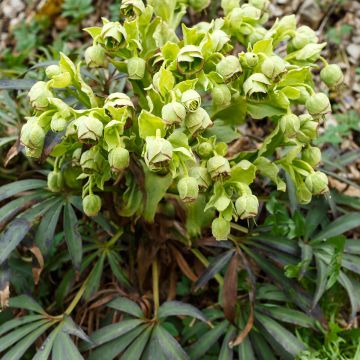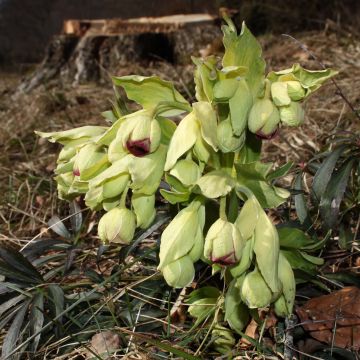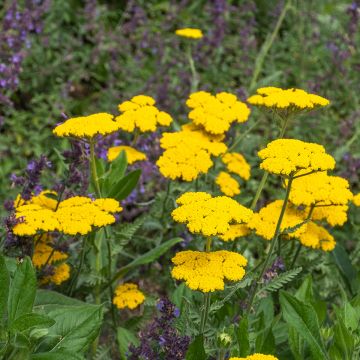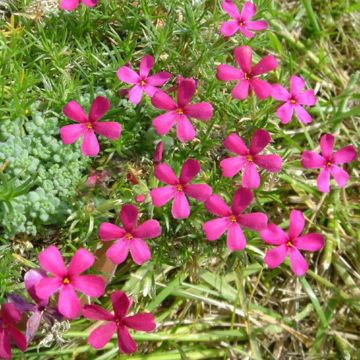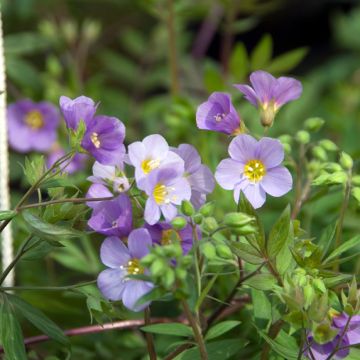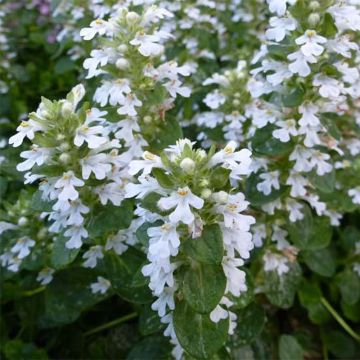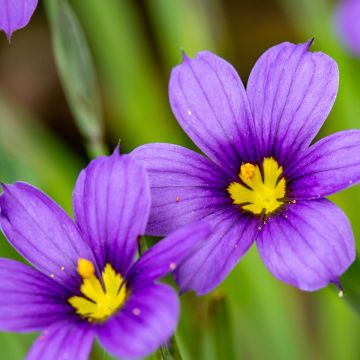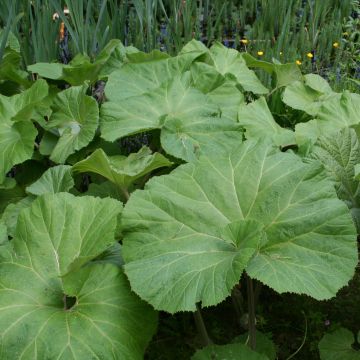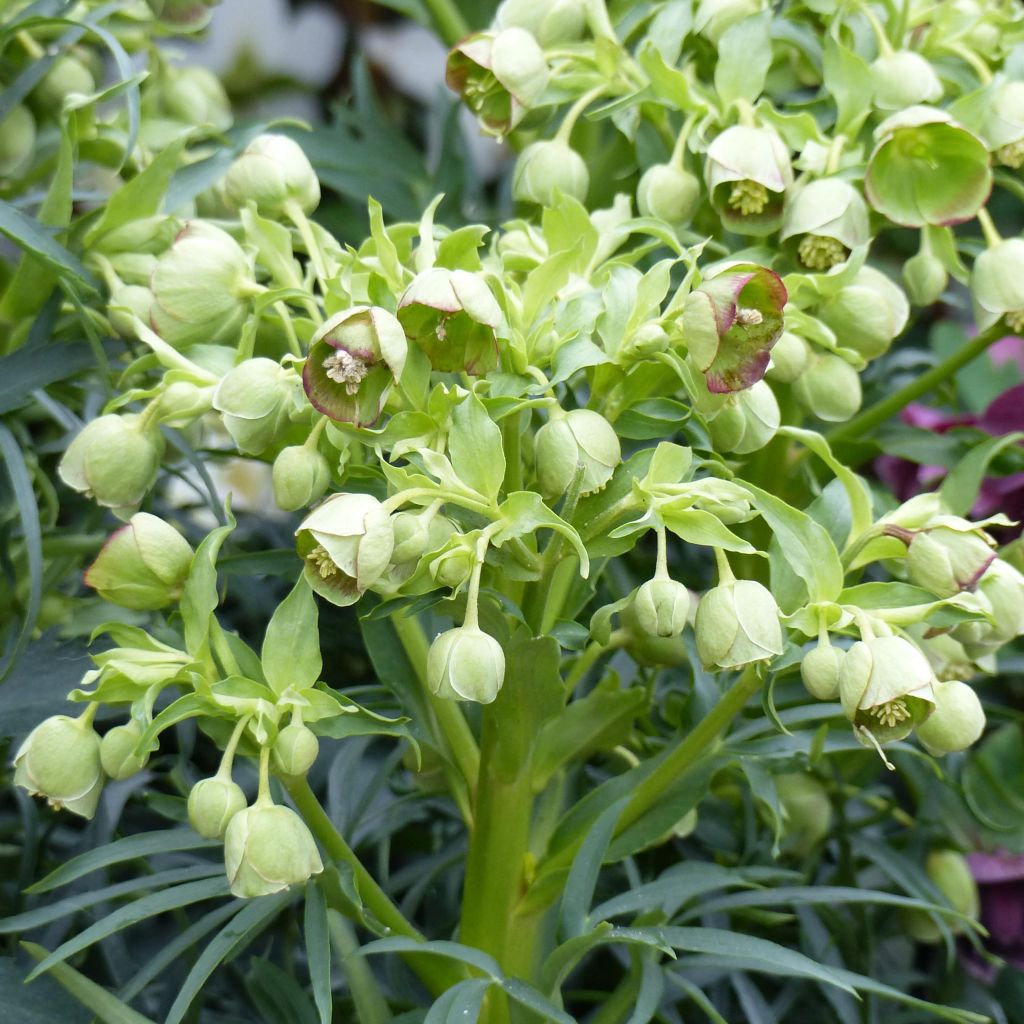

Helleborus foetidus Sopron
Helleborus foetidus Sopron
Helleborus foetidus Sopron
Stinking hellebore 'Sopron', Stinking hellebore, Bear's foot, Dungwort, Foetid hellebore, Ox heel, Setterwort, Stinkwort
I am testing this young plant whose foliage is beautiful and which thrives in dry soils. I received it well packaged. I am eagerly awaiting its flowering.
Béatrice, 09/04/2021
Special offer!
Receive a €20 voucher for any order over €90 (excluding delivery costs, credit notes, and plastic-free options)!
1- Add your favorite plants to your cart.
2- Once you have reached €90, confirm your order (you can even choose the delivery date!).
3- As soon as your order is shipped, you will receive an email containing your voucher code, valid for 3 months (90 days).
Your voucher is unique and can only be used once, for any order with a minimum value of €20, excluding delivery costs.
Can be combined with other current offers, non-divisible and non-refundable.
Home or relay delivery (depending on size and destination)
Schedule delivery date,
and select date in basket
This plant carries a 12 months recovery warranty
More information
We guarantee the quality of our plants for a full growing cycle, and will replace at our expense any plant that fails to recover under normal climatic and planting conditions.

Would this plant suit my garden?
Set up your Plantfit profile →
Description
Helleborus foetidus 'Sopron' is a spontaneous cultivar of the fetid hellebore discovered in Hungary, near the town of Sopron. This unique variety, shorter than the type, surprises and charms with its blue-grey green foliage that appears to be frosted with silver. Its elegance is accentuated by finely cut leaves. The plant produces numerous clusters of bright flowers in the shape of greenish-yellow bells, tinged with brown-red on the inside. The fetid hellebore is a short-lived perennial species, but undoubtedly the most tolerant of all, which easily self-seeds in shaded areas of the garden where it undeniably brings a touch of refinement and whimsy.
Called griffon's foot, snake rose, bear's paw, horse biter, spring herb, or favalau depending on the region, Helleborus foetidus is a wild plant of the Ranunculaceae family, native to western and central Europe. In nature, this species is found with an upright habit that can reach 1m (3ft) in flower in uncultivated places and groves, under oaks, in rocky and rather dry areas, in limestone or neutral soil, or in acidic soil in sunny locations. The fetid hellebore grows in altitudes up to 1800m (5905ft). Its lifespan is about 3 to 4 years.
The 'Sopron' variety distinguishes itself by its more compact growth, not exceeding 60cm (24in) in flower, and its extraordinary silvery foliage, which is finer than that of the type. This perennial plant develops a tuft of foliage topped by the flowering, carried by green and robust stems. Upright at the beginning of flowering, it gradually bends over. Its biennial stems, 60cm (24in) tall, are glabrous but densely leafy below the inflorescence. Flowering takes place from January to April, above the evergreen foliage. This hellebore bears inflorescences in cymes, composed of numerous small globular bell-shaped flowers measuring 1 to 3cm (1in) in diameter. These flowers are inclined to protect themselves from bad weather. They are pale green-yellow in colour, margined with brown-red on the outside and inside the corolla. They have numerous creamy-coloured stamens, larger than the petals, inserted in a spiral pattern as in all Ranunculaceae. Following pollination by dipterous insects, bees and bumblebees, the fetid hellebore produces dry fruits releasing several seeds. The leaves of this variety are initially greenish-blue, then in autumn and winter they take on their characteristic silvery glaze that enhances their beauty. They are divided into more than 10 very narrow and inclined segments, measuring 15 to 25cm (6 to 10in) long and showing a serrated edge. They are arranged horizontally around the stem. The evergreen foliage is sometimes deciduous in summer in dry and hot climates. The species name, foetidus, refers to the unpleasant odour emitted by the foliage when crushed.
The fetid hellebore is a hardy and undemanding plant, useful for illuminating shaded areas, the base of large trees, or the north and east facades of the house. Use hellebores like elements in an old tapestry, mixing them with understory plants with brighter colours. 'Sopron' is a rare variety, which can be appreciated even in summer in cool climates for its astonishing foliage pattern. As such, it can be planted at the base of Clethra or Japanese maples, which will provide beneficial shade in summer without smothering it, along with Asarum europaeum, for example, variegated periwinkles, or dwarf hostas. It can be planted in groups, like a bouquet, near the entrance of the house, in a shaded location, or in a large pot, to enjoy its unusual, bright and early flowering up close.
This hellebore is a close relative of Helleborus niger. It can be toxic. Its seeds were formerly used in the Middle Ages for their supposed purgative virtue to treat madness.
Report an error about the product description
Helleborus foetidus Sopron in pictures

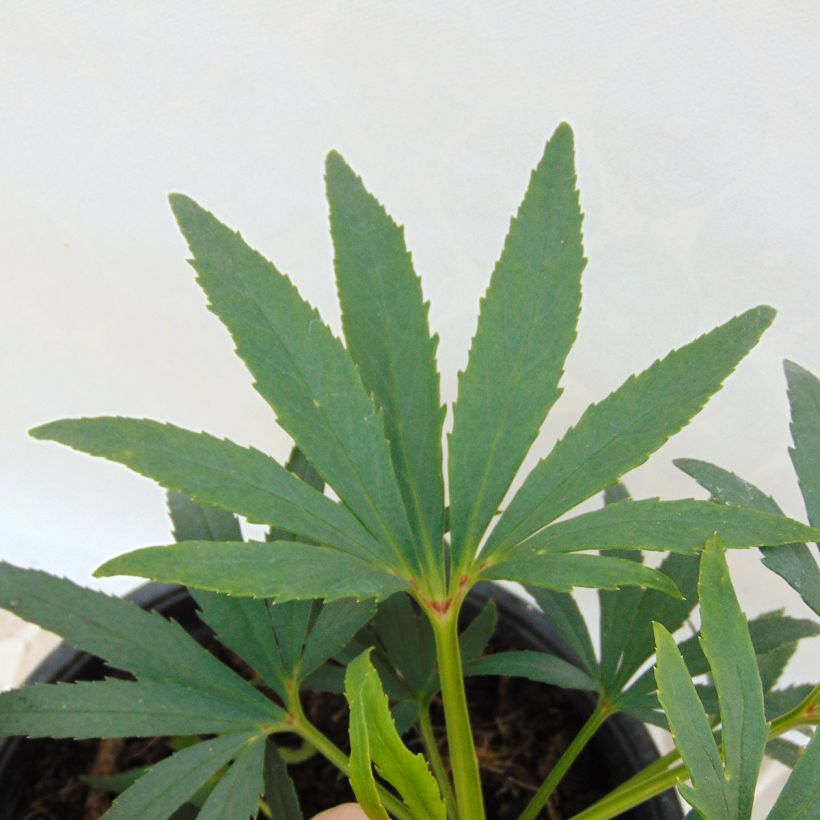



Flowering
Foliage
Plant habit
Botanical data
Helleborus
foetidus
Sopron
Ranunculaceae
Stinking hellebore 'Sopron', Stinking hellebore, Bear's foot, Dungwort, Foetid hellebore, Ox heel, Setterwort, Stinkwort
Central Europe
Other Helleborus foetidus
View all →Planting and care
Helleborus foetidus is ideally placed in the north in light shade or partial shade, sheltered from the wind. It is a calcicolous plant, meaning it grows in calcareous soil, but also tolerates acidic soils very well. The soil should be fertile, moist in summer, but especially well-drained. Plant from early autumn to spring. It flowers from January to April. During planting, add leaf compost or organic material. Be careful not to put the plants too close to each other to promote their development. Water the plants well after planting and then add a layer of mulch 2 to 5cm (1 to 2in) thick. Regularly remove faded leaves, especially when flower buds appear. Remove faded flowers after seed fall. In autumn and spring, add compost to your hellebores to stimulate their flowering. Once all the flowers have faded, replace the topsoil at the base of your plants with compost or well-rotted manure. Hellebores do not like stagnant water as it can cause them to rot. Never let the stumps dry out completely in summer. Hellebores do not like to be moved. Helleborus foetidus may be susceptible to black rot or the appearance of leaf spots. Aphids and snails can attack the plant.
Planting period
Intended location
Care
-
, onOrder confirmed
Reply from on Promesse de fleurs
Similar products
Haven't found what you were looking for?
Hardiness is the lowest winter temperature a plant can endure without suffering serious damage or even dying. However, hardiness is affected by location (a sheltered area, such as a patio), protection (winter cover) and soil type (hardiness is improved by well-drained soil).

Photo Sharing Terms & Conditions
In order to encourage gardeners to interact and share their experiences, Promesse de fleurs offers various media enabling content to be uploaded onto its Site - in particular via the ‘Photo sharing’ module.
The User agrees to refrain from:
- Posting any content that is illegal, prejudicial, insulting, racist, inciteful to hatred, revisionist, contrary to public decency, that infringes on privacy or on the privacy rights of third parties, in particular the publicity rights of persons and goods, intellectual property rights, or the right to privacy.
- Submitting content on behalf of a third party;
- Impersonate the identity of a third party and/or publish any personal information about a third party;
In general, the User undertakes to refrain from any unethical behaviour.
All Content (in particular text, comments, files, images, photos, videos, creative works, etc.), which may be subject to property or intellectual property rights, image or other private rights, shall remain the property of the User, subject to the limited rights granted by the terms of the licence granted by Promesse de fleurs as stated below. Users are at liberty to publish or not to publish such Content on the Site, notably via the ‘Photo Sharing’ facility, and accept that this Content shall be made public and freely accessible, notably on the Internet.
Users further acknowledge, undertake to have ,and guarantee that they hold all necessary rights and permissions to publish such material on the Site, in particular with regard to the legislation in force pertaining to any privacy, property, intellectual property, image, or contractual rights, or rights of any other nature. By publishing such Content on the Site, Users acknowledge accepting full liability as publishers of the Content within the meaning of the law, and grant Promesse de fleurs, free of charge, an inclusive, worldwide licence for the said Content for the entire duration of its publication, including all reproduction, representation, up/downloading, displaying, performing, transmission, and storage rights.
Users also grant permission for their name to be linked to the Content and accept that this link may not always be made available.
By engaging in posting material, Users consent to their Content becoming automatically accessible on the Internet, in particular on other sites and/or blogs and/or web pages of the Promesse de fleurs site, including in particular social pages and the Promesse de fleurs catalogue.
Users may secure the removal of entrusted content free of charge by issuing a simple request via our contact form.
The flowering period indicated on our website applies to countries and regions located in USDA zone 8 (France, the United Kingdom, Ireland, the Netherlands, etc.)
It will vary according to where you live:
- In zones 9 to 10 (Italy, Spain, Greece, etc.), flowering will occur about 2 to 4 weeks earlier.
- In zones 6 to 7 (Germany, Poland, Slovenia, and lower mountainous regions), flowering will be delayed by 2 to 3 weeks.
- In zone 5 (Central Europe, Scandinavia), blooming will be delayed by 3 to 5 weeks.
In temperate climates, pruning of spring-flowering shrubs (forsythia, spireas, etc.) should be done just after flowering.
Pruning of summer-flowering shrubs (Indian Lilac, Perovskia, etc.) can be done in winter or spring.
In cold regions as well as with frost-sensitive plants, avoid pruning too early when severe frosts may still occur.
The planting period indicated on our website applies to countries and regions located in USDA zone 8 (France, United Kingdom, Ireland, Netherlands).
It will vary according to where you live:
- In Mediterranean zones (Marseille, Madrid, Milan, etc.), autumn and winter are the best planting periods.
- In continental zones (Strasbourg, Munich, Vienna, etc.), delay planting by 2 to 3 weeks in spring and bring it forward by 2 to 4 weeks in autumn.
- In mountainous regions (the Alps, Pyrenees, Carpathians, etc.), it is best to plant in late spring (May-June) or late summer (August-September).
The harvesting period indicated on our website applies to countries and regions in USDA zone 8 (France, England, Ireland, the Netherlands).
In colder areas (Scandinavia, Poland, Austria...) fruit and vegetable harvests are likely to be delayed by 3-4 weeks.
In warmer areas (Italy, Spain, Greece, etc.), harvesting will probably take place earlier, depending on weather conditions.
The sowing periods indicated on our website apply to countries and regions within USDA Zone 8 (France, UK, Ireland, Netherlands).
In colder areas (Scandinavia, Poland, Austria...), delay any outdoor sowing by 3-4 weeks, or sow under glass.
In warmer climes (Italy, Spain, Greece, etc.), bring outdoor sowing forward by a few weeks.






























